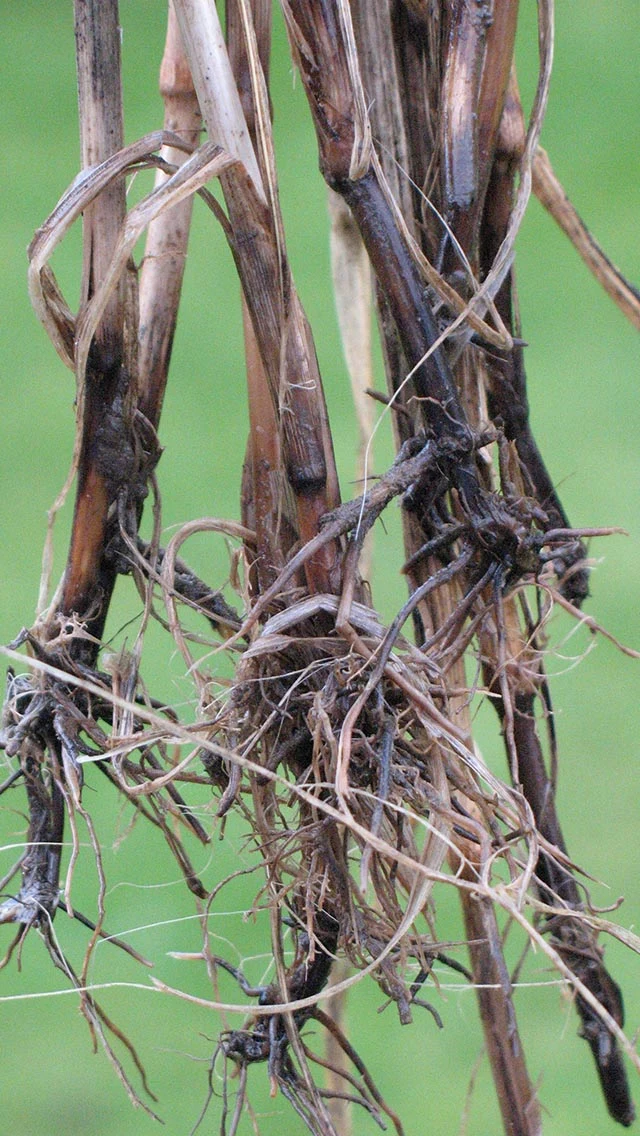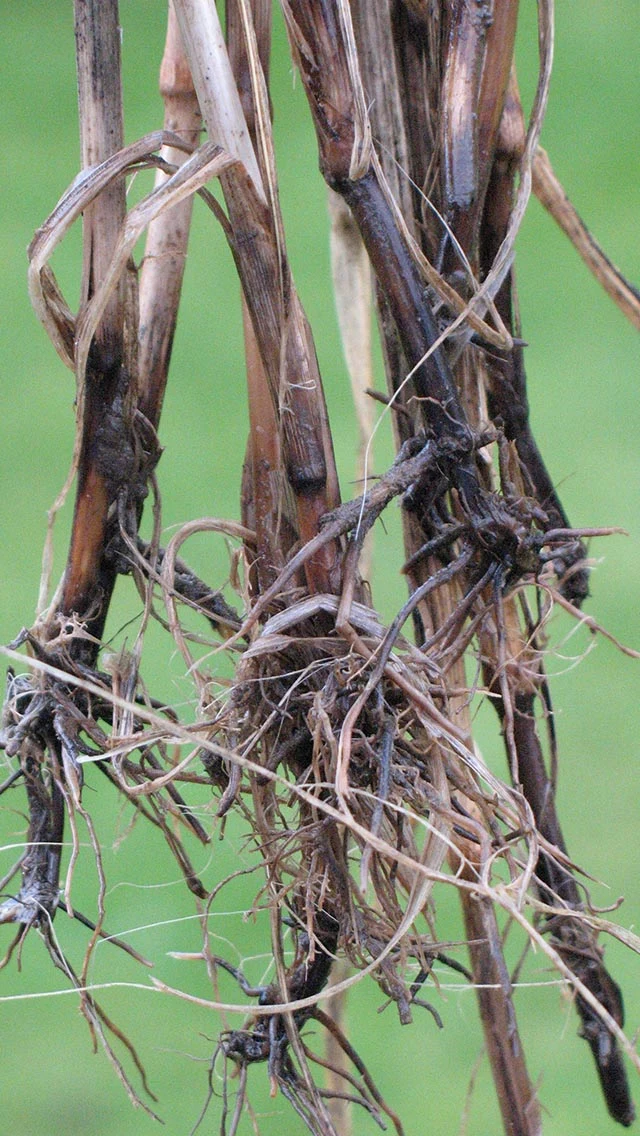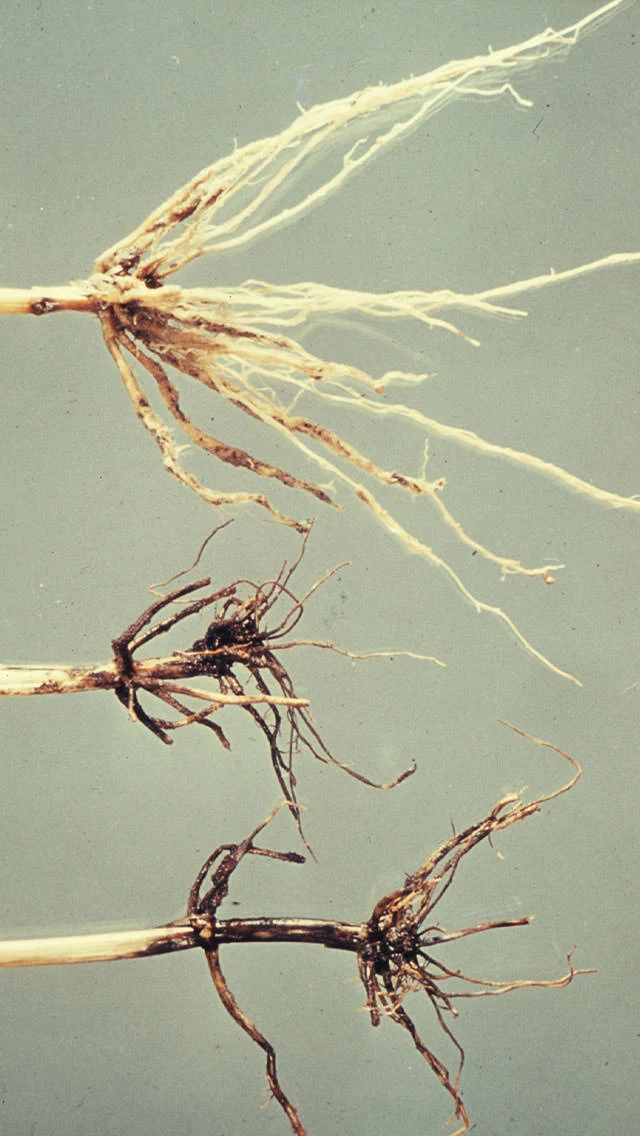
Take-all
Gaeumannomyces graminis var. tritici (does not affect oats) Gaeumannomyces graminis var. avenae (oats )
Pathogen
Fungus
Hosts
Wheat, barley, oats, rye, triticale, grasses, particularly couch and loose silky bent.
Gaeumannomyces graminis var. tritici (does not affect oats but does affect wheat, barley, rye and other grass spp.).
Gaeumannomyces graminis var. avenae (affects oats, wheat, barley, rye and other grass spp.).
Symptoms
Young plants appear stunted and outer leaves turn yellow. Roots become darkened and brittle ultimately turning black.
The infected mature plants, often occurring in patches, are dwarfed and the ears are grey to white in colour – the well known `whitehead` symptom. On pulling up badly infected plants the brittle black roots break off.
Development
Infection comes mainly from root and stem base debris in the soil but grass weeds also contribute. The mycelium itself is persistent in the soil for up to 2 years. The inoculum builds up with intensive cereal cropping.
Favourable Factors
Autumn sowings are most at risk, especially in cold, wet seasons and in marginal soils with poor drainage and fertility. In good soils other micro-organisms and better root growth help reduce the damage caused by this disease. Optimum conditions for disease are a mild winter, a moist cool spring and a dry early summer. Light, alkaline soils can also be favourable for this disease.
Importance
Yield loss can be up to 50% in the third and fourth cereal crops and quality of grain is reduced with many shrivelled grains often parasitized by sooty moulds.
Control
Fungicidal seed treatment
Strobilurin based fungicide, with activity on take-all, applied in the spring
Delayed drilling
Crop rotation
Consolidated seed beds
Avoiding continuous runs of winter wheat and ensuring rapid and healthy plant establishment by correcting drainage and soil structure problems helps minimise the effect of the disease.
Including spring barley as a break crop will not lower the incidence of disease- spring crops can also suffer from take-all.
Adequate applications of nitrogen in the spring helps the plant to overcome root loss due to the disease.
Notes
A phenomenon called ‘take-all decline’ occurs in successive wheat and barley crops when, after an initial increase for about four years the disease level reduces. This is believed to be due to the development of micro-organisms antagonistic to the take-all fungus. However, the decline is not great enough to allow the yield to recover to the level achieved by first year cereals.

Severe take-all, note the blackened stunted roots (Photo S. Gage)

Healthy plant on the right


